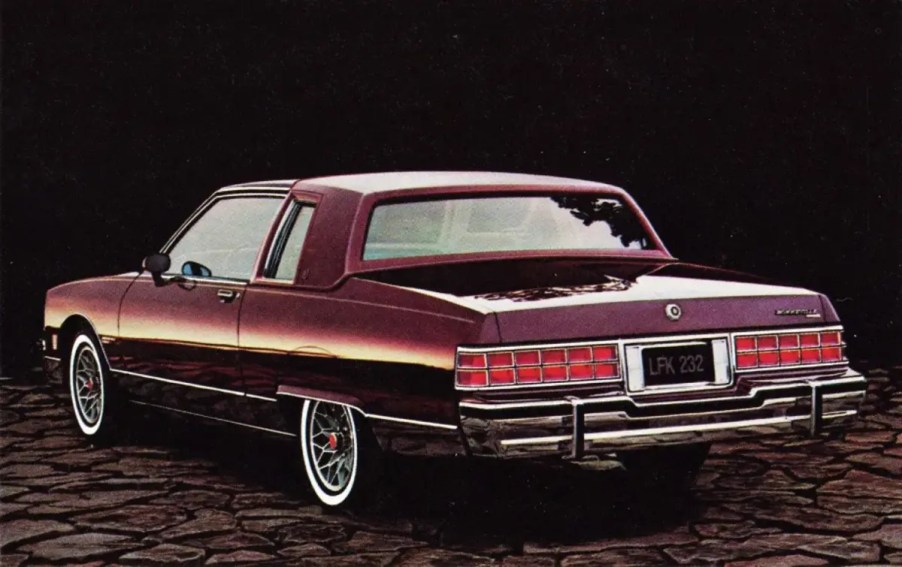
As the V8 Engine Era Ends, We Look at the Worst Ones Ever Made
When we think about American production V8s, we think of engines like the Chevrolet small block, Chrysler Hemi, and Ford 302. With the rise in overhead V8s after the war, there were too many successful examples to even list. But sprinkled among those great V8 engines were some duds. Some real duds. And in many ways, it is amazing that these powerplants made it past the development stage.
From their early days in the late-1940s, through the horsepower races of the 1960s, and then confronting the gas shortages and emissions restrictions in the 1970s and 1980s, engines are born to satisfy a need. New materials, manufacturing practices, and things like fuel injection and computer controls have changed engine technology. But with attempts to conquer these new frontiers, the lack of time, technology, or testing, has resulted in the boat anchors below.
Cadillac L62 4-6-8 V8 engine 1981

You’ll find that a lot of the worst V8 engines ever made came in the 1970s and 1980s. GM’s zeal to improve mileage and begin incorporating computer technology resulted in the Cadillac 4-6-8 debacle. This V8 used computer-controlled cylinder deactivation. It was a great idea, found in a variety of engines today.
However, in the late-1970s and early 1980s, the technology didn’t exist for the demands necessary to pull it off seamlessly. The hampered displacement-on-demand used sensors and solenoids to shut off and turn on the spark to the cylinders. An ECU read loads, acceleration, and other inputs to shut down two or four cylinders when in cruising situations.
These early ECUs couldn’t keep up. With 13 software updates and engines continuing to face problems, and everything from stumbling to running too lean or rich, Cadillac was overmatched. Why these problems arise during testing is probably due to the rush to introduce the engine. By the beginning of 1982 car production, Cadillac quietly dropped the engine. But the hit to its reputation lasted long after the engine was but a memory.
Chrysler Lean Burn V8 1976-1979

The double threat of mandated better fuel economy combined with cleaner emissions saw different approaches. Leaning out fuel delivery, retarding the timing, and smaller displacement were just some of the quicker ways Detroit would tackle the fed’s onslaught. But Chrysler had a better idea, or at least it thought it did.
Its “Lean Burn” technology used the first computerized controls in an automobile according to AllPar. It utilized sensors and a specially-designed carburetor-controlled spark advance. With leaner fuel mixtures, emissions were greatly reduced. But problems were so common and with dealer technicians not understanding the issues, many junked the system and went back to carburetors.
Besides technology deficiencies, the ECU was mounted in the worst place possible, on the air filter. That’s right in the middle of vibration and heat, two of electronics’ worst enemies. And the excessive amount of vacuum hoses created still more problems. Barely lasting 10 years, it was supplanted by improved electronics in 1986.
Oldsmobile LF9 Diesel V8 engine 1978 – 1985

As bad as Cadillac’s problems were with the 4-6-8, Oldsmobile had much worse problems with its 350 ci passenger car diesel engine. Taking a nod from BMW and Mercedes, Oldsmobile developed its own diesel engine. To speed up the process, Olds adapted its 350 ci gas engine for this failure.
The bean counters may have thought this a win, but diesel engines develop more compression than gas-fed engines. With only the gas engine’s 10 bolts holding the heads onto the engine block, blown head gaskets were almost a weekly event. Also, the cost-cutting step to eliminate a water separator for fuel in the days of water contaminating almost every filling station meant injector pump corrosion.
Oldsmobile was stubborn, and valiantly tried to cure the Diesel’s problems. But band-aids and supposed fixes did not help. The final straw was when the California Air Resources Board wouldn’t certify the engine. That, combined with poor sales, doomed the engine in 1985.
Pontiac “LS5” 265 ci V8 engine 1980 – 1981

Lack of development and rushed production dates doomed many of GM’s engine technology which took place in the 1970s and 1980s. Among these unfortunate attempts was Pontiac’s idea to reduce cubic-inch displacement to increase fuel economy. It took its successful 301 V8 engine and reduced the cylinder bore diameter.
This resulted in its 265 ci V8. That’s the same displacement as Chevy’s first small-block V8s starting in the mid-1950s. However, it was no small-block Chevy. This 265 packed only 120 hp. Talk about a stone. There were smaller engines with more horsepower, which raised the obvious question: why bother? As a result of the power impairment, nobody bought it. The following year, all Pontiac engines were replaced with either Chevy or Oldsmobile engines, which added to its other problem, further muddying GM division distinctions.
Update: 6/7/2023



